Which of the following figure shown the magnetic flux denstiy b at a distance r from a long straight rod carrying a steady current I ?
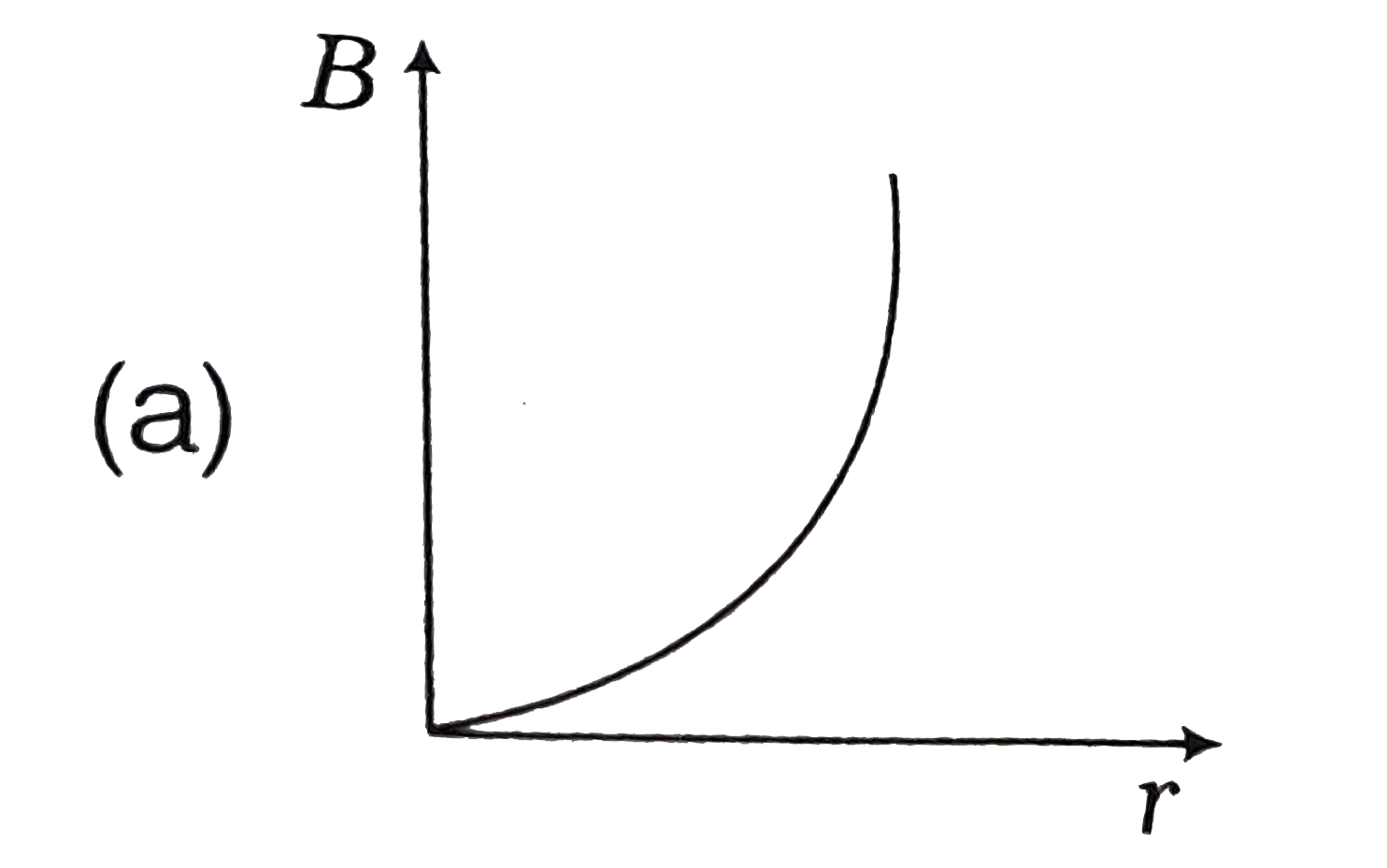
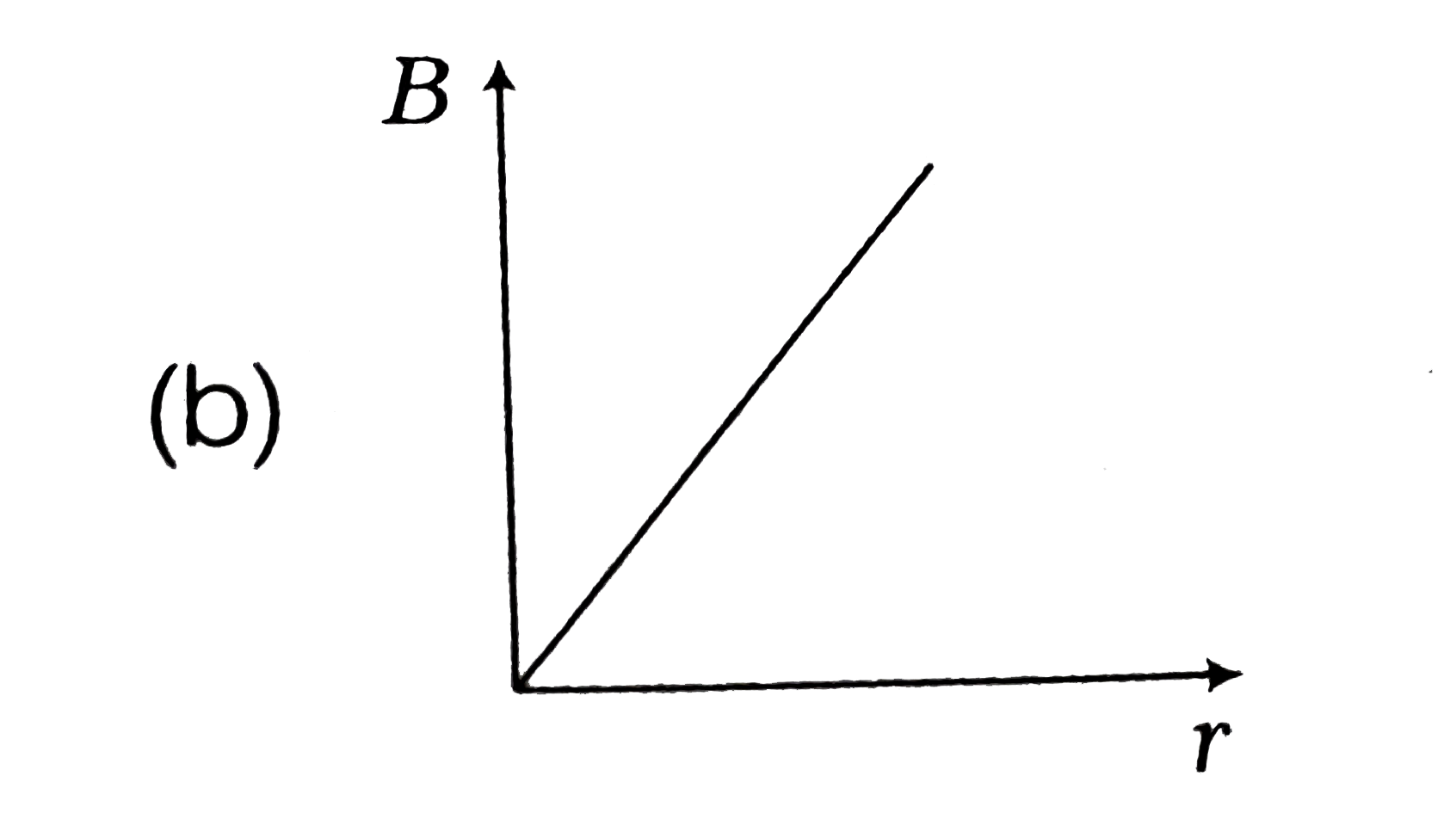
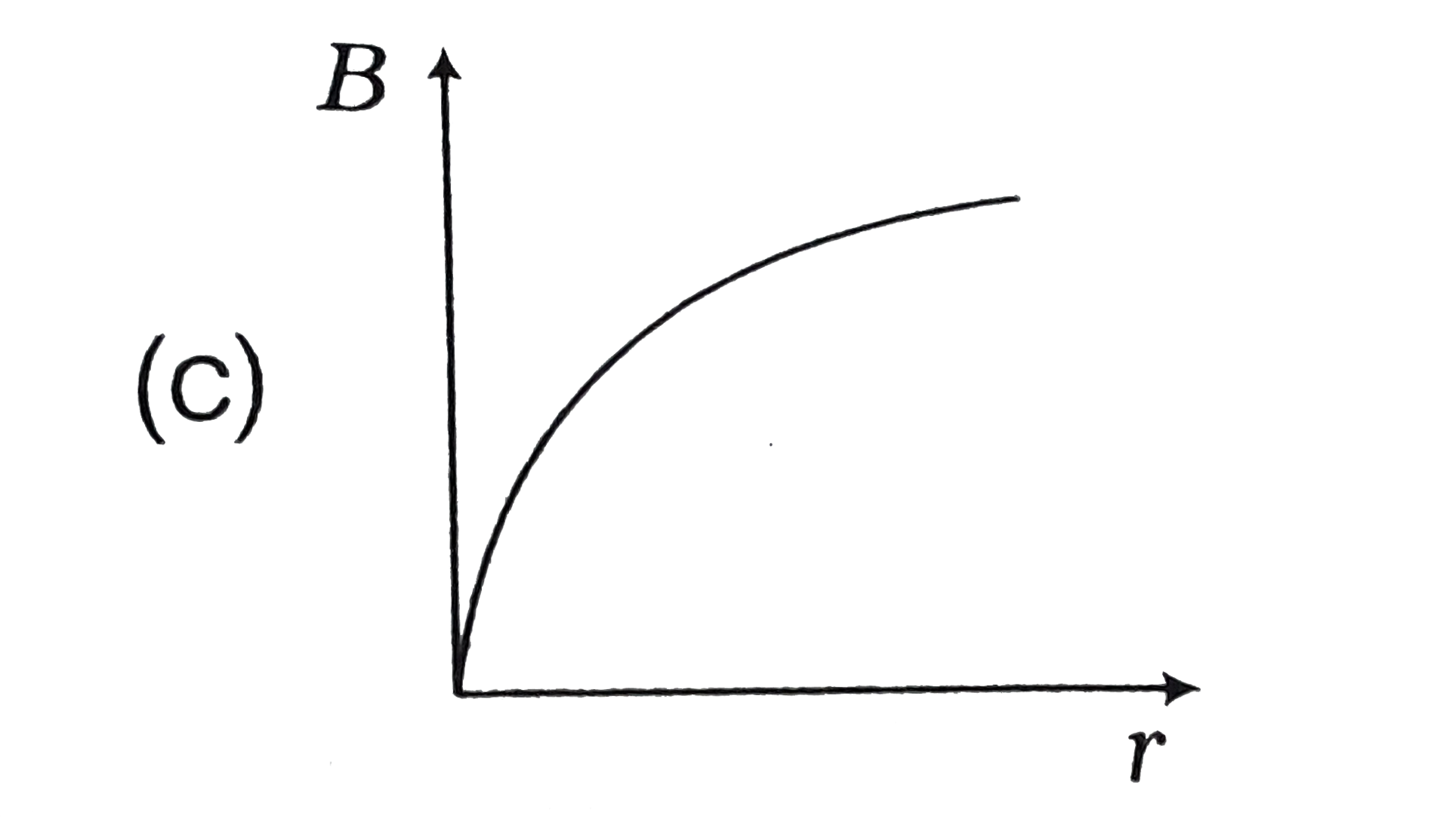
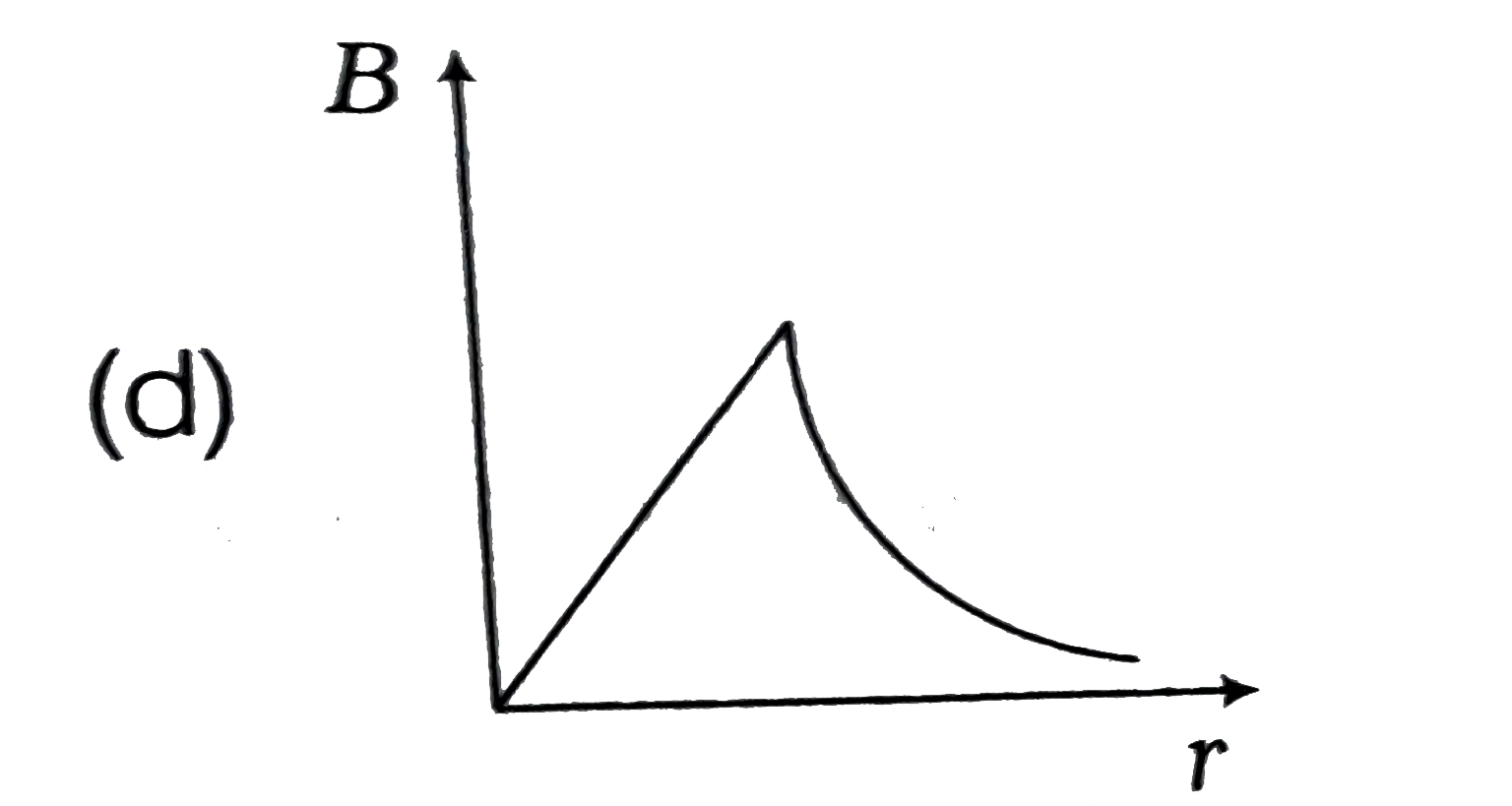
The correct Answer is:D
To solve the problem of determining which figure shows the magnetic flux density B at a distance r from a long straight rod carrying a steady current I, we can follow these steps:
Step 1: Understand the Magnetic Field Around a Long Straight Current-Carrying Rod
The magnetic field B around a long straight rod carrying a steady current can be derived using Ampere's Circuital Law. The law states that the line integral of the magnetic field B around a closed loop is equal to the permeability of free space μ0 times the total current I enclosed by the loop.
Step 2: Analyze the Two Cases
We need to analyze two cases based on the distance r from the center of the rod:
1. Case 1: When r is greater than the radius A of the rod.
- Here, the magnetic field B can be calculated using the formula:
B=μ0I2πr
- This shows that B is inversely proportional to r (i.e., as r increases, B decreases).
2. Case 2: When r is less than the radius A of the rod.
- In this case, the current enclosed by the Amperian loop is not the total current I but a fraction of it based on the area. The enclosed current Ienclosed can be expressed as:
Ienclosed=I(r2A2)
- The magnetic field B in this case is given by:
B=μ0I2πA2r
- This indicates that B is directly proportional to r (i.e., as r increases, B increases).
Step 3: Graphical Representation
To represent these relationships graphically:
- For r<A, the graph will be a straight line passing through the origin, indicating B is directly proportional to r.
- For r>A, the graph will show a hyperbolic decline, indicating B is inversely proportional to r.
Step 4: Identify the Correct Option
Based on the analysis:
- The graph will have a linear portion for r<A and a hyperbolic portion for r>A.
- The correct option that represents this behavior is Option D.
Final Answer
The answer to the question is Option D.
---
The magnetic field B around a long straight rod carrying a steady current can be derived using Ampere's Circuital Law. The law states that the line integral of the magnetic field B around a closed loop is equal to the permeability of free space μ0 times the total current I enclosed by the loop.
We need to analyze two cases based on the distance r from the center of the rod:
- Here, the magnetic field B can be calculated using the formula:
B=μ0I2πr
- This shows that B is inversely proportional to r (i.e., as r increases, B decreases).
- In this case, the current enclosed by the Amperian loop is not the total current I but a fraction of it based on the area. The enclosed current Ienclosed can be expressed as:
Ienclosed=I(r2A2)
- The magnetic field B in this case is given by:
B=μ0I2πA2r
- This indicates that B is directly proportional to r (i.e., as r increases, B increases).
To represent these relationships graphically:
- For r<A, the graph will be a straight line passing through the origin, indicating B is directly proportional to r.
- For r>A, the graph will show a hyperbolic decline, indicating B is inversely proportional to r.
Based on the analysis:
- The graph will have a linear portion for r<A and a hyperbolic portion for r>A.
- The correct option that represents this behavior is Option D.
The answer to the question is Option D.
Topper's Solved these Questions
- MAGNETIC FIELD AND FORCESBOOK - DC PANDEY ENGLISHCHAPTER - MAGNETIC FIELD AND FORCESEXERCISE - Taking it together
75 Videos
- MAGNETIC FIELD AND FORCESBOOK - DC PANDEY ENGLISHCHAPTER - MAGNETIC FIELD AND FORCESEXERCISE - Assertion and reason
20 Videos
- MAGNETIC FIELD AND FORCESBOOK - DC PANDEY ENGLISHCHAPTER - MAGNETIC FIELD AND FORCESEXERCISE - Medical entrance s gallery
59 Videos
- INTERFERENCE AND DIFFRACTION OF LIGHTBOOK - DC PANDEY ENGLISHCHAPTER - INTERFERENCE AND DIFFRACTION OF LIGHTEXERCISE - Level 2 Subjective
5 Videos
- MAGNETICSBOOK - DC PANDEY ENGLISHCHAPTER - MAGNETICSEXERCISE - MCQ_TYPE
1 Videos
Similar Questions
Which one of the following graphs shows the variation of magnetic induction B which distance r from a long wire carrying a current ?
View SolutionMagnetic field at a distance a from long current carrying wire is proportional to
View SolutionAn equilateral triangular frame with side a carrying a current I is placed at a distance a from an infinitely long straight wire carrying a current I as shown in the figure. One side of the frame isparallel to the wire. The whole system lies in the xy-plane. Find the magnetic force F acting on the frame.
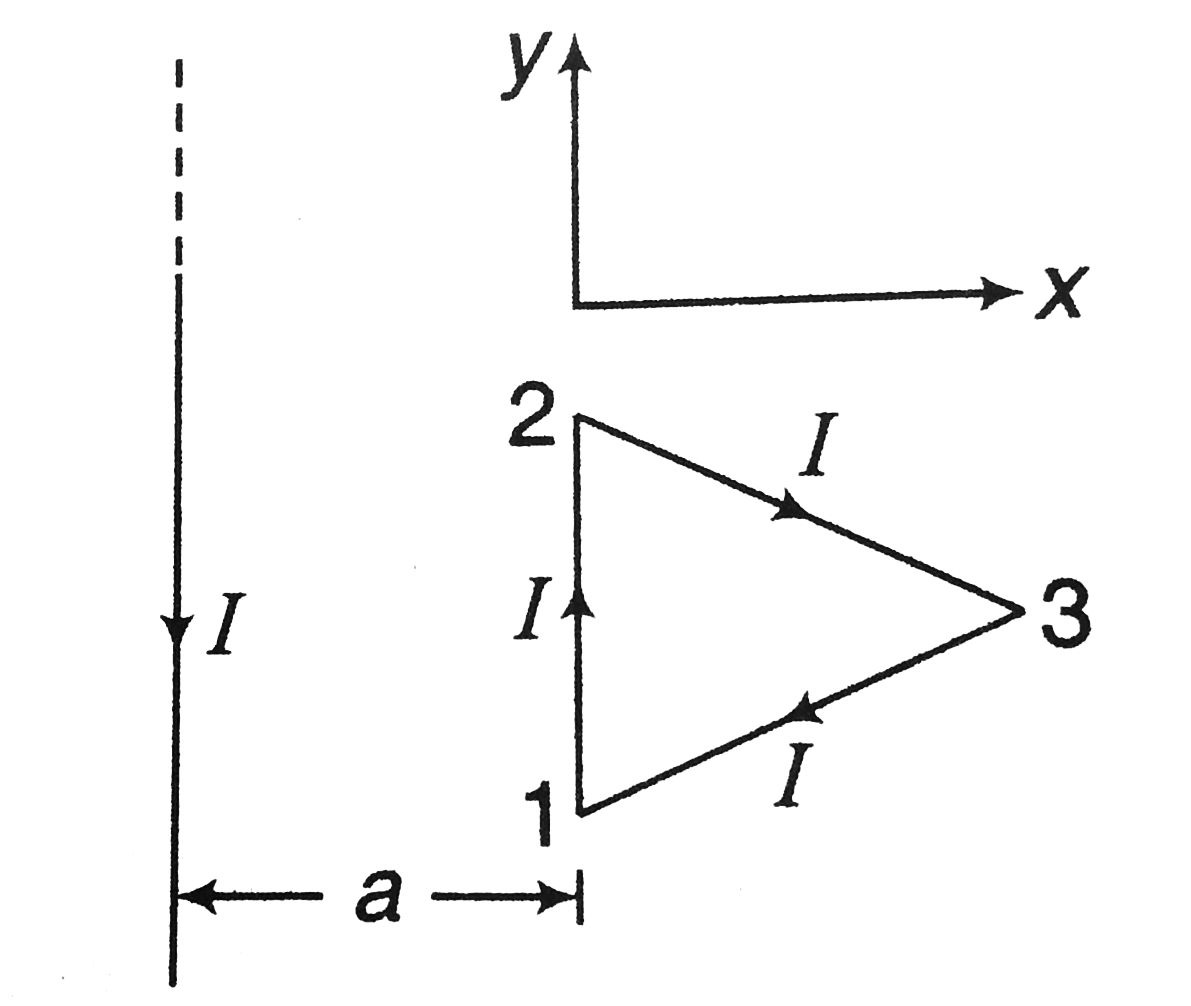
View Solution(i) Write the expression for the magnetic moment (→m) due to a planar square loop of side 'l' carrying a steady current I in a vector form.
(ii) In figure., this loop is placed in a horizontal plane near a long straight conductor carrying a steady current I1 at a distance l as shown. Give reasons to explain that the loop will experience a net force but no torque. Write the expression for this force acting on the loop.

View SolutionThe magnetic field at a distance r from a long wire carryimg current I is 0.4 T. The magnetic field at a distance 2r is
View SolutionThe strength of the magnetic field at a point r near a long straight current carrying wire is B. The field at a distance r2 will be
View SolutionThe strength of the magnetic field at a point r near a long straight current carrying wire is B. The field at a distance r2 will be
View SolutionThe magnetic field strength at a point P distant r due to an infinite straight wire carrying a current i is as shown in the figure

View SolutionA square loop, carrying a steady current I, is placed in a horizontal plane near a long straight conductor carrying a steady current I1 at a distance d from the donductor as shown in figure. The loop will experience
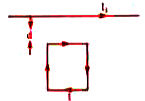
View SolutionThe magnetic flux density at a point distant d from a long straight current carrying conductor is B, then its value at distance d2 will be-
View Solution
